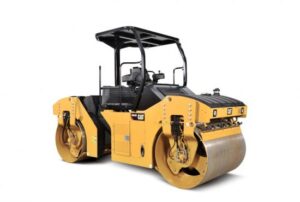- ghosh.enterprise@hotmail.com
- Near Alampur Bus Stand,Andul Road, Alampur, Howrah, West Bengal 711302
- 9830802363 / 9830661521
Tandem Roller Rental Service
Tandem Roller
In tandem rollers, there is one steel drum in the front and one in the back. The roller is moved by the movement of the two drums. Thanks to its two drums, tandem rollers can flatten and pave entire highway segments within just a few hours. Although they’re great for flat, gradual surfaces like asphalt, their lack of traction means they’re not recommended for anything specialized.
Follow these steps for operating the tandem roller:
Turn on the master switch. It is located in the engine compartment. Turn the key. The engine will now start supplying the power.
Adjust your seat so that you feel comfortable during the operation. The seat can be adjusted for leg lengths, and weight. Usually, seat adjustment levers are located below the seat and can easily be accessed with hands.
Next is to adjust the control units. It can be adjusted for rotation and steering column angle. There is a lever usually on the side of the seat which adjusts it. You can also change the back slope of your seat. After you have adjusted the seat and control unit make sure that their position is locked now.

Now turn the switch in the middle position. It will show all the indicator lamps of the engine. The lamps will light up for five seconds and the beeper will produce a sound. Check for any warning lights.
Check that voltmeter is giving at least the desired amount of current level.
Check the fuel using the fuel gauge and Check oil pressure and parking brakes.
Before the operation, the preheating lamp must go on. Put on the seat belt. If there are signs of wear and tear on them, replace them. Rubber elements on the operator platform should also be intact. Any worn-out items should be replaced as it will make the operator discomforting.
If there is a cab for the operator sitting area, make sure the door of the cab is closed before the operation. Before moving make sure the forward and rear views are clear and there is no obstruction. All the mirrors should be clean so that the operator enjoys maximum visibility.
Put the engine gear in the neutral position. Diesel engines are not able to start in any other position and set the desired amplitude of the vibration.
Set the engine speed to idling position. This will let the roller start to move slowly.
The maximum speed with rolling operation is recommended to be 6 km per hour while if it is not rolling the maximum speed should be 11 km per hour.
During rolling and driving keep an eye on the gauges to make sure they are giving the right reading and there is nothing wrong.
For difficult surfaces, there are special modes in the roller, which allow more power to be delivered to the drums.
The control for vibration level is also given in the operator’s area. The vibration should be adjusted as per the design documents.
To stop the roller, apply brakes which are installed in the operator’s cabin in a similar way as in the car. Once the roller has come to stop, set it back to the neutral position and eventually turn off the engine.

